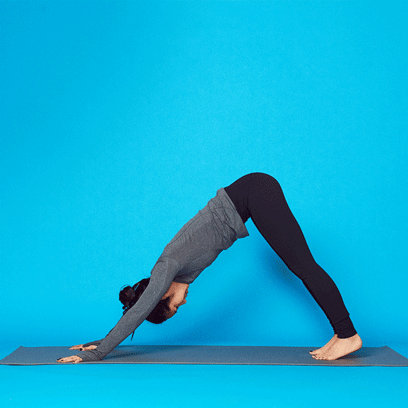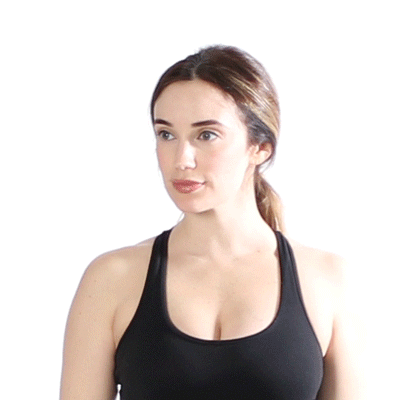A regular exercise routine is an important part of any arthritis treatment plan. Exercises for arthritis can improve overall function and relieve symptoms such as pain, discomfort, and stiffness.
Consistent exercise will tone your body, boost energy levels, and promote a healthy body weight. You’ll improve flexibility and mobility, build muscle and bone strength, and boost your overall physical and mental well-being.
Additional benefits include more quality sleep, better balance, and bone strength. Read on to take a look at some of the best exercises for arthritis and add them to your daily routine today.
Do moderate, low-impact exercises to soothe tired, achy joints. Avoid activities that are too strenuous, and be careful not to overstretch, especially if you have hypermobile joints. Avoid being sedentary, and make a point to do some type of physical activity daily.
The goal of these exercises is to heal, energize, and invigorate your body to manage your symptoms. Be gentle on yourself and don’t extend beyond your limits.
In addition to these exercises, you can choose non-strenuous activities such as walking, stationary cycling, and water exercises. Cardio machines, yoga, and tai chi are also options.
Consider using a heat pack for 20 minutes before exercise and an ice pack for 20 minutes afterward.
Do these exercises a couple of times a day. Ideally, you could do them upon waking, during the day, and before bed. On days when time is limited, set aside at least 10 minutes to move your body.
1. Child’s Pose
This yoga pose promotes relaxation relieves tension in your neck, low back, and hip flexors. For added comfort, place a cushion under your forehead, hips, or thighs.
To do it:
- From tabletop position, sink your hips toward your heels.
- Gently place your forehead on the floor.
- Reach your arms out in front or rest them next to your body.
- Hold this position for up to 3 minutes.
2. Neck rotations
Neck exercises can help to relieve tension in your head, neck, and shoulders.
To do it:
- Stand or sit with your spine straight.
- Keep your chin level as you gently turn your head to gaze over your right shoulder.
- Engage your neck muscles, and hold this position for 5 seconds.
- Gently release back to the starting position.
- Then do the opposite side.
- Do each side 5 times.
3. Downward-Facing Dog
If you have concerns with your wrists, turn your fingers out to the sides slightly or walk your hands forward. You could also use yoga blocks or wedges to alleviate wrist pressure.
Try this modified Downward-Facing Dog for a slightly different stretch.
To do it:
- From tabletop position, press into your hands as raise your hips toward the ceiling.
- Align your head with the insides of your upper arms or tuck your chin into your chest.
- Keep your heels slightly lifted, bend your knees slightly, and elongate your spine.
- Hold this position for up to 1 minute.
4. Door presses
This exercise strengthens your shoulder joints.
To do it:
- Stand in a doorway with your right arm bent at a right angle.
- Position your fingers to point up toward the ceiling with your palm facing forward.
- Press the back of your wrist into the doorframe for 5 seconds.
- Using the other side, press your palm into the doorframe for 5 seconds.
- Do the opposite side.
- Do 2 to 3 sets of 8 to 12 repetitions.
5. Knuckle bends
To do it:
- Hold out your left hand with your fingers straight and close together.
- Bend the end and middle joints of your fingers while keeping your knuckles straight.
- Press the tips of your fingers into the pads of your fingers or hand for 5 seconds.
- Slowly release to bring your fingers back to the starting position.
- Then do the opposite hand.
- Do 3 to 5 repetitions.
6. Finger bends
To do it:
- Hold out your left hand.
- Gently press your thumb into your palm, holding this position for 3 to 5 seconds.
- Release your thumb back to its original position.
- Bend your index finger to press into your palm, holding this position for 3 to 5 seconds.
- Straighten your finger back to its original position.
- Continue with all of the fingers on your left hand.
- Repeat on your right hand.
Your hands are in constant use, so it’s vital to do hand exercises to keep them flexible, pain-free, and functional.
7. Fingertip touches
To do it:
- Hold out your left hand with your fingers straight and close together.
- Form an O shape by pressing your thumb into each finger, one at a time.
- Press into each finger for 5 seconds.
- Do each side 2 to 5 times.
8. Fist stretch
To do it:
- Straighten the fingers on your left hand before slowly bending your hand into a fist.
- You can rest the side of your forearm, wrist, and hand on a table or flat surface.
- Place your thumb on the outside of your fingers, making sure not to squeeze too tightly.
- Hold this position for 5 seconds.
- Release to the starting position.
- Do this 8 to 12 times.
- Then do the right side.
9. Lunge
To deepen this stretch, you can lift your back knee and extend your arms overhead.
To do it:
- From tabletop position, bring your right foot forward so your knee is directly above your ankle.
- Keep your knee directly under your hips or extend your knee back slightly.
- Place your hands on either side of your right foot.
- Square your hips to face forward and elongate your spine.
- Hold this position for up to 1 minute.
- Do the opposite side.
10. Knee-to-chest stretch
To do it:
- Lie on your back with your feet on the floor near your hips.
- Gently draw your right knee into your chest.
- Place your hands behind your thigh or around your shin.
- Keep your left knee bent or straighten your leg.
- Hold this position for up to 1 minute.
- Do the opposite side.
- Then bring both knees into your chest at the same time.
- Hold this position for up to 1 minute.
Use cushions, chairs, and straps to your advantage. These props can help you to feel more comfortable during long stretches, allowing you to go deeper and get the most benefits. Have a wall or object within reach and have someone nearby, if possible.
11. Step-ups
To do it:
- Stand at the bottom of a staircase, holding onto the railing for support.
- Step your left foot onto the bottom step, followed by your right foot.
- Place your left foot down, followed by your right foot.
- Do 10 to 16 repetitions.
- Then repeat with your right foot leading.
Talk to your doctor or physical therapist before starting any new exercise routine. They can help you develop a plan that best accommodates your individual needs, which may include modifications.
Don’t overdo it, especially when you’re beginning. Take a rest or break when needed. Avoid exercises that aggravate your symptoms or cause you discomfort, swelling, or redness in your joints. Stop if you experience sharp, intense pain.
Don’t push yourself beyond your limits, which can vary between days. You may find your symptoms are more pronounced during certain types of weather or times of the day. Take this into consideration when planning your sessions.
Begin each session with a warmup and follow with a cooldown. This allows you to gradually ease your way in and out of activity. Slowly increase the duration and intensity of your exercise routine as you progress.
To enhance your exercise program, you may find it beneficial to work with a fitness professional. They can personalize your training to suit your unique needs and goals.
A trainer can give you guidance, feedback, and modification options. They’ll check to make sure you’re doing the exercises correctly and safely, which optimizes the benefits of your workout and lowers your chance of injury.
A fitness pro can also help you to stay motivated and hold you accountable for your growth and success. They’ll be up to date on the latest research and trends, keeping you in the know.
Take charge of your health to manage your arthritis symptoms and know that success, improvements, and healing are possible. Do these exercises regularly to see the best results. Listen to your body and do what feels most appropriate on any given day.
Stay well-hydrated and follow a healthy diet with plenty of fresh fruits and vegetables. Include anti-inflammatory herbs and drink plenty of water. Stay consistent and enjoy the benefits of your dedication and hard work.



